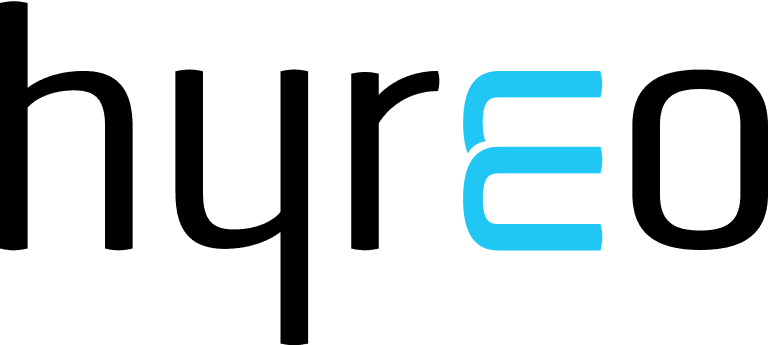The post-pandemic talent landscape has been keeping employers and leaders on their toes, especially those in the retail industry, with the most unexpected events. No one would have imagined it coming the way it did – vacant office buildings, no more fun-filled tea breaks, employees compelled to socialize and collaborate through their screens. Perhaps they’ve become a little too comfortable with the virtual setup that many are quitting their jobs to become self-employed artists, influencers, or digital creators on social media. And the rest, those who still plan to work for an employer, have become very picky in terms of their choices and expectations, for instance, demanding remote working arrangements.
For recruiters and talent acquisition leaders, this new talent-focused dimension coupled with a dramatic upswing in talent shortage rates and open positions has become a nightmare, which they have to overcome at any cost because their competitors are already on it.
As per the Korn Ferry report on the Future of Work, the talent shortage is expected to soar beyond calculations. By 2023, more than 85 million jobs could remain open because of the lack of skilled talent. Now imagine, proceeding with a mass hiring event amidst this looming talent shortage, pressed by seasonal demands or business expansion.
For many organizations, mass hiring, also known as high-volume hiring, is indispensable for organizational growth. However, the challenges it presents due to numerous HR trends, technological developments, and evolving employee expectations, can make it difficult to work out without the support of well-crafted recruitment strategies.
What exactly is mass hiring?
As the name suggests, the mass hiring process or bulk hiring refers to hiring a large number of employees for single or multiple positions within a short timeframe. Mostly it happens when the companies plan to scale up their workforce as part of organizational expansions or to manage seasonal fluctuations or unexpected turnovers.
Mass recruitment needs extensive planning, coordination, and execution to make it a success. Not hitting a bull’s eye in any of these aspects results in bad hires, obviously creating a loss for the company. Though mass recruitment is demanding and challenging, with the right set of strategies to assist the objectives, organizations can easily attract the best talents and fill up the open positions quickly and efficiently.
Top 4 proven strategies for a smooth and successful mass hiring in 2024

#1 Technology and Automation
Looking into SHRM’s analysis, we can see that the average cost per hire is nearly $4,700 as per the new benchmarking data and the average time to fill per position is 33.28 days, according to the staffing metrics.
In high-volume hiring scenarios, success hinges on the ability to hire quickly without compromising quality, a task nearly impossible to achieve manually. Fortunately, with the advent of AI and automation technologies, much of this burden can be alleviated. These advanced tools can automate key recruiting operations such as screening, interview scheduling, and onboarding, allowing talent acquisition teams to focus more on strategic planning. This ensures efficient, top-quality bulk hiring within a short timeframe.
Popular technologies and tools to support the mass hiring process:
- Applicant Tracking Systems (ATS): Streamlines the hiring process by automating job postings, resume screening, and candidate communications.
- AI-Powered Sourcing Tools: Utilizes artificial intelligence to identify and engage with top talent efficiently across various platforms.
- Video Interviewing Platforms: Facilitates remote interviews, saving time and resources while allowing for scalable candidate assessments.
- Recruitment Marketing Software: Enhances employer branding and candidate engagement through targeted marketing campaigns and analytics.
- Employee Referral Platforms: Leverages current employees’ networks to find qualified candidates quickly, often leading to higher quality hires and retention rates.
#2 Optimized Job Descriptions
US News reveals that about 95% of recruiters use LinkedIn as a marketing platform to attract top-tier talent. So, when you are leveraging job boards for talent attraction, job descriptions play a key role in capturing the attention of your ideal candidate and luring them to your pipeline.
However, with job seekers’ attention span limited to just 8 seconds, as per Indeed, the job description you post has to be compelling and detailed enough to catch their interest and convince them of the important benefits when they decide to work for you.
Hence, keep job descriptions as clear and accurate as possible by giving an elaborate overview of the position and listing out the roles and responsibilities in a way that doesn’t create any confusion for candidates. Clearly define your expectations to make it easier for the candidates to understand the role and meet performance standards.
Also read: Benefits and best Recruitment Strategies to use on LinkedIn
#3 Consistent Candidate Engagement
Amidst the sea of applications, each candidate might seem like just another applicant to you, but to them, you’re a unique employer. The recruiting experience you provide is a significant part of their journey. It’s similar to how motherhood is a common experience, yet for each mother, it is uniquely personal and meaningful.
Considering this in a bulk-hiring scenario, it is evident that the limited time will chip away at recruiters’ ability to foster engagement with every potential candidate and deliver a positive candidate experience. However, there are proven means to tackle this challenge with ease.
LinkedIn statistics emphasize the role of AI chatbots in advancing candidate communication and engagement, stating career websites that employ chatbots to engage with talents generate 95% more leads. And 60% of candidates engage outside of working hours, which clearly showcases how powerful chatbots are in facilitating 24/7 engagement. No need to mention how utterly impossible this is with traditional engagement strategies.
Chatbots can help recruiters maintain consistent engagement with candidates throughout the mass hiring process by assisting them with pre-employment assessments, answering their queries, addressing their concerns, and offering support during onboarding.
Also read:
How to improve Candidate Engagement
Top reasons to implement chatbots in recruitment
Hiring New Blood: Best Campus Recruitment Strategies
#4 Strong Employer Brand
Picture yourself as a skilled and qualified candidate. Would you miss a mass hiring event conducted by Google or Microsoft? These giants are renowned for their unique and strong employer branding and not even passive candidates are immune to their branding charm.
In the modern talent terrain, highlighting financial benefits isn’t enough to woo your prospective candidates. Their preferences and expectations have obviously evolved. Today, candidates prioritize employers who hold strong values, a workplace culture, and a robust reputation.
Here are some important statistics from LinkedIn to highlight how crucial employer branding is for successful talent acquisition.
- 72% of recruiting leaders agree that employer brand significantly impacts hiring.
- 59% of recruiting leaders are increasing their investment in employer branding.
- Organizations see a 28% reduction in turnover with a strong employer brand.
- Employer branding can cut cost-per-hire by 50%.
- Time to hire can be 1-2 times faster with a strong employer brand.
- 75% of job seekers consider an employer’s brand before applying.
There are numerous options available for implementing compelling brand storytelling. Social media can be a powerful ally in communicating your brand values to your ideal audience. Websites and job boards can serve as canvases to paint an irresistible image of your organization for job seekers. Highlight your company culture through employee testimonials and workplace events. The bottom line is to ensure your company values, culture, and vision are clearly communicated across all platforms.
Hyreo: Where high-volume hiring meets a great candidate experience
Imagine that you’re hosting a mass virtual hiring event. And the minute the job posting is done, you’re flooded with thousands of applications–including the hidden gems you intend to find. However, you’re not overwhelmed by the volume or the tight timeframe. Because, you have Hyreo integrated into your ATS, performing all tasks for you.
- Sending automated nudges to engage with candidates right when they hit apply and guiding them to a well-designed page showcasing your brand story.
- Connecting them with a 24/7 conversational AI chatbot that not only carries out engaging interactions but also manages Gen AI-driven prescreening, automated interview scheduling, and automated ticketing, keeping candidate engagement intact.
- Automating 60% of recruiting tasks to free recruiters from the administrative burden and allow them to focus on high-value activities instead.
- Providing invaluable insights on candidate’s joining propensity, hireability, recruiting process, and trends, through Advanced Analytics, pointing out the areas of improvement, and helping you make well-informed decisions.
With Hyreo, this vision becomes a reality. Hyreo can streamline and enhance your mass hiring process while simultaneously boosting your employer branding.
Recommended Reads:
7 Strategies to Keep New Hires Engaged Before Onboarding
What is High-Volume Recruiting? 6 Key Challenges & Top Strategies to handle it
Conclusion
With the talent shortage looming on the horizon, employers and recruiting leaders must stay prepared for the challenges to stay ahead in the heating competitive labor market and secure the top talent. Mass hiring in 2024 requires a strategic approach that leverages technology, promotes a strong employer brand, and creates a positive candidate experience. By implementing these strategies, you can attract the right talent, streamline your hiring process, and ensure the success of your mass hiring efforts.
FAQs
What is mass hiring?
Mass hiring is the process of recruiting many employees within a short timeframe to meet an organization’s high-volume staffing needs.
What are the challenges involved in mass hiring?
Challenges in mass hiring include maintaining quality while hiring quickly, ensuring a positive candidate experience, managing large volumes of applications, and achieving diversity and inclusion.
Which tools and technologies support mass hiring?
Tools and technologies that support mass hiring include Applicant Tracking Systems (ATS), AI-based screening tools, pre-employment assessment platforms, and data analytics for recruitment metrics.



